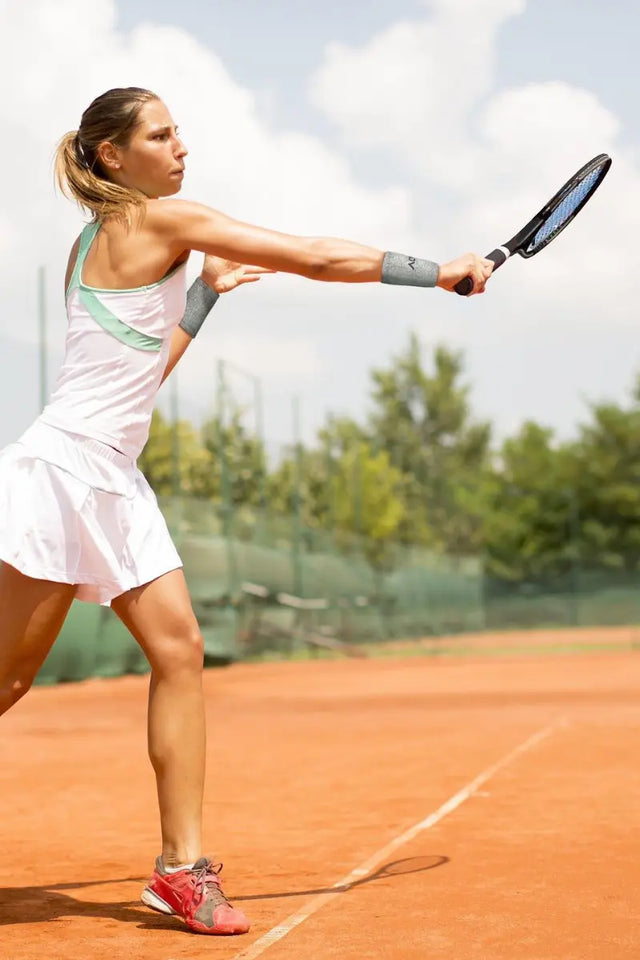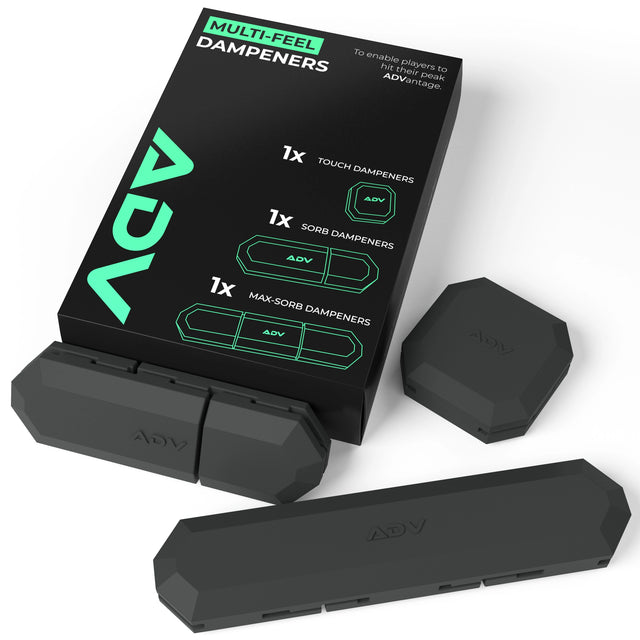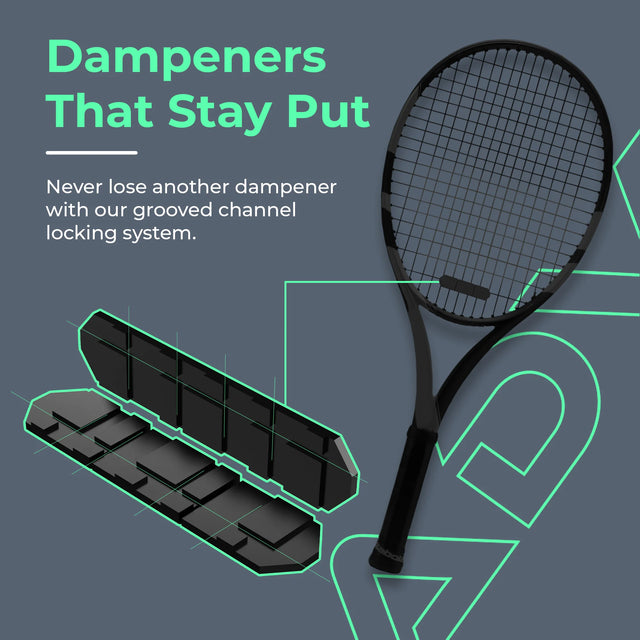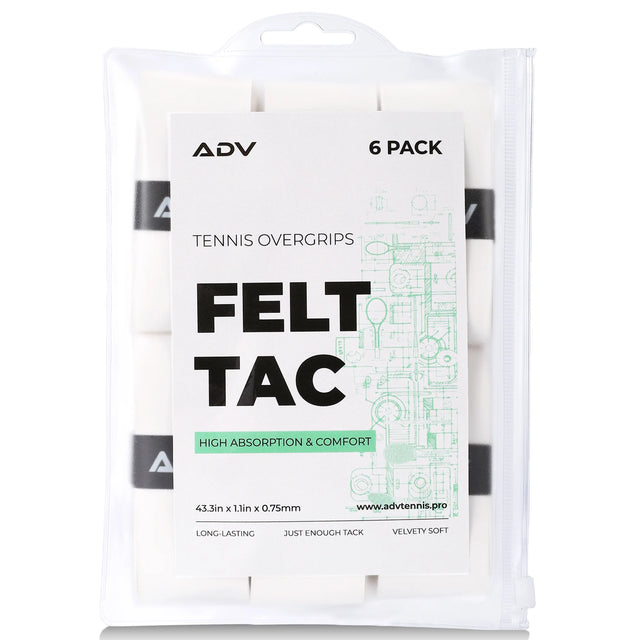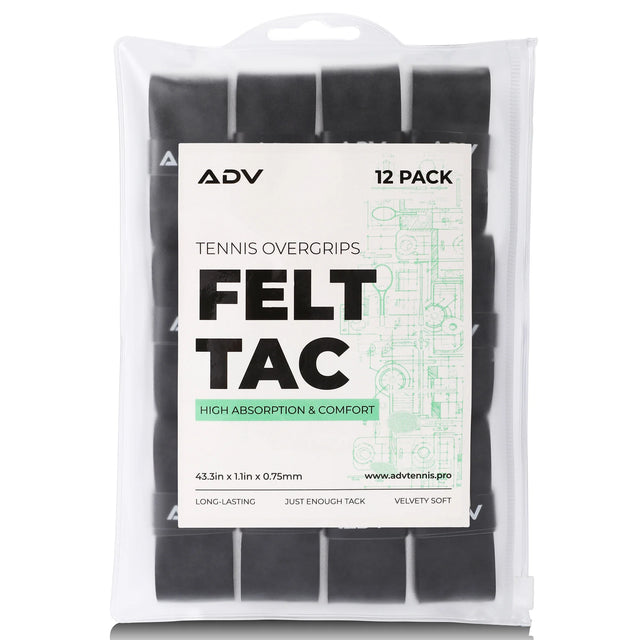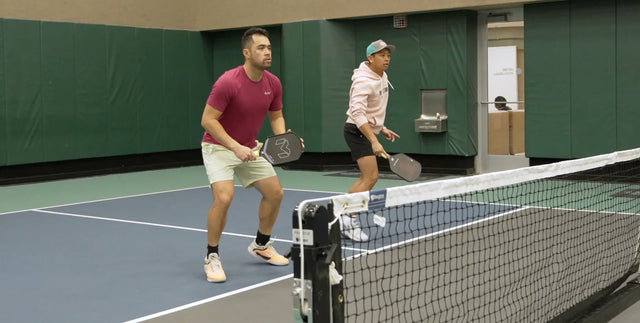The Evolution of Tennis Gear: Combining Engineering and Sport
The development of tennis gear is a fascinating journey of technological innovation that mirrors the sport's own growth. From simple wooden racquets to advanced composite materials, the integration of engineering principles into sports equipment has profoundly transformed how tennis is played. This blend of technology and physical activity isn't just about improving the quality of the tools; it's about enhancing the overall experience of every player, from amateur to professional. The evolution of tennis gear illustrates how scientific advancements enhance the strategic depth and excitement of the game.
Historical Overview of Tennis Equipment
The evolution of tennis equipment reflects a remarkable journey shaped by centuries of innovation, cultural influence, and technological progress. Tennis traces its roots to the 8th century, when European monks played a handball-like game called “La Soule” within monastery courtyards. Over time, the game evolved, with players gradually introducing webbed gloves, simple paddles, and eventually racquets with wooden frames and natural gut strings by the 14th century. The 19th century marked a pivotal era, as the development of vulcanized rubber made it possible to produce balls that could reliably bounce, enabling tennis to transition from indoor courts to grassy outdoor lawns. This innovation, coupled with Major Walter C. Wingfield’s 1874 patent for “Sphairistiké”, a precursor to modern tennis, laid the foundation for the sport’s widespread popularity across Europe and the United States.
As tennis gained international acclaim, equipment continued to advance in parallel with the sport’s growth. Courts evolved from monastery courtyards and hourglass-shaped fields to the standardized rectangular layouts used today, with surfaces expanding to include grass, clay, hard, and synthetic options. The 20th century witnessed further milestones, such as the introduction of rubber-soled shoes, plimsolls, and, later, specialized tennis footwear designed for performance and court-specific needs. Racquet technology also experienced dramatic shifts, moving from heavy wooden frames to lighter and stronger metal, and eventually to graphite and composite materials, each stage enhancing power, control, and player comfort. In recent decades, accessories like ergonomic bags, sweatbands, and vibration dampeners, as well as innovations in apparel, have contributed to the holistic evolution of tennis gear. These major milestones not only improved athletic performance but also made the sport more accessible, comfortable, and enjoyable for players of all levels. By tracing the development of tennis equipment from its medieval origins to today’s high-tech gear, we see a story of continuous adaptation, one that mirrors the dynamic spirit of tennis itself.

The History of Tennis Racquets
Early Wooden Racquets
The history of the tennis racquet traces back to the late 19th century, when the first models were crafted entirely from wood. These early racquets were heavy by modern standards, offering minimal comfort and flexibility to the player. However, they laid the foundational principles of racquet design, focusing on durability and basic functionality. Natural materials like ash wood characterized these primitive racquets, setting the stage for future innovations in tennis equipment.
Transition to Metal and Graphite Racquets
As technology advanced, so did racquet materials. By the mid-20th century, manufacturers began experimenting with metals, creating the first steel racquets. These offered more durability and a lighter weight compared to their wooden predecessors. The real breakthrough, however, came with the introduction of graphite in the 1980s. Graphite racquets revolutionized the game by providing exceptional strength and stiffness while remaining lightweight, allowing for greater swing speed and power.
Composite Materials and Modern Racquet Innovation
Today’s racquets are a testament to the ongoing innovation in materials science, utilizing a blend of carbon fiber and other composite materials to enhance performance further. These modern racquets are designed for both professional athletes and recreational players, offering a range of customization options to suit various play styles and preferences. The use of composite materials in tennis racquet design underscores the sport’s shift toward high-tech, multi-component solutions that prioritize power, control, and comfort. Modern racquets are engineered to optimize sweet spots, balance, and frame stiffness, directly influencing the game's dynamics. Innovations such as wider body frames and improved tennis string technology enable players to hit the ball harder with greater precision, highlighting the pivotal role that tennis gear design plays in the sport's strategic elements.
Advancements in Tennis Balls and Strings
From Basic Rubber to High-Performance Tennis Balls
The evolution from basic rubber balls to high-performance tennis balls used in today's game is a testament to chemical and materials engineering advancements. Initially, tennis balls were simple rubber spheres, sometimes covered in flannel. Over the decades, the core composition has been refined to control bounce, durability, and speed, addressing varying climatic conditions and surface types. Such transformation ensures that modern tennis balls meet strict regulatory standards, providing consistent play across global tournaments.
Traditional Gut Strings vs. Synthetic Alternatives
Historically, tennis racquets were strung with natural gut made from cow or sheep intestines, valued for their elasticity and feel. However, natural gut strings are susceptible to weather conditions and can degrade quickly. The introduction of synthetic strings brought about a revolution in durability and consistency of performance. Made from materials like nylon, polyester, and Kevlar, synthetic strings offer players a range of properties, such as increased durability and different feels, which can be tailored to individual playing styles.
String Tension and Its Impact
The tension of tennis strings plays a crucial role in the gameplay, influencing everything from the speed of the ball to the feel of the racquet in a player's hand. Here's how string tension can affect various aspects of tennis play:
- Control: When the strings are tightly strung, they create a more stable hitting surface, reducing the ball's trampoline effect. This stability enables players to place their shots with surgical precision, crucial during fast-paced rallies or while hitting near the lines. However, this increased control comes at the cost of power, as the tighter strings absorb more energy. Higher tension is often the preferred choice for players who value precision over force. Customizing tension to suit personal play styles allows individuals to balance control with other gameplay elements effectively.
- Power: In contrast, lower string tension provides a noticeable boost in power, making it a popular choice for beginners or players seeking to maximize their shot velocity. Looser strings create a trampoline-like effect when striking the ball, propelling it forward with less effort from the player. This additional power can be advantageous during serves and baseline rallies, where distance and speed are prioritized. However, the increased power can compromise control, as the ball tends to launch off the racquet with less predictability. Striking the right balance between power and precision is key, and players often experiment with tension adjustments to achieve their ideal setup.
- Spin: Looser strings allow for greater string movement and snapback, enhancing the ball's spin. This is particularly beneficial for players who rely on heavy topspins to control the trajectory and bounce of their shots. Conversely, higher tension reduces string movement, making it more challenging to impart spin but improving the consistency of flat strokes.
- Feel: The overall feel of the racquet is another subjective but essential factor influenced by string tension. High tension provides a crisp, firm sensation upon contact, which many advanced players find satisfying for precision shots. On the other hand, lower tension offers a softer, more forgiving feel, reducing vibration and minimizing the risk of discomfort or injuries like tennis elbow. This softer feel appeals to players prioritizing comfort or those with sensitive arms.
Understanding string tension and its impact allows players to tailor their racquets to meet their specific gameplay needs. Whether you're striving for control, power, spin, or comfort, experimenting with tension settings can lead to significant improvements in your performance and enjoyment of the game.
The Role of Technology in Ball and String Durability
Manufacturers use high-tech materials and precise manufacturing processes to extend the life of these essential components, reducing environmental impact and the frequency of replacements. For balls, the introduction of water-resistant felt and more resilient core materials has helped maintain optimal performance levels longer, even under rigorous play conditions. Similarly, for strings, innovations in polymer blends and coating techniques have provided players with options that withstand intense play without sacrificing performance.

The Rise of Specialized Tennis Gear
Evolution of Tennis Gear Bags
Initially, players used basic bags that did little more than carry racquets and balls from one match to another. However, as the demands of the sport increased, so did the complexity of the bags. Today’s tennis racket bag designs reflect a deep understanding of a player's needs, incorporating multiple compartments for equipment, hydration, and personal items, all aimed at maximizing organization and accessibility. The modern 6-racket tennis bag is a perfect example of how specialized tennis gear has become. These bags are designed not only to protect and store multiple racquets but also to offer other features.
Ergonomic and Multi-Function Bags
Designers prioritize comfort, adjustability, and ease of use, ensuring that bags can be carried comfortably for long durations without straining the player’s body. Additionally, multifunctional features such as convertible straps for backpack or shoulder carry, built-in hooks for hanging the bag on fences, and waterproof pockets for electronics reflect the multifaceted needs of today’s tennis players.
Essential Accessories for Competitive Players
Competitive tennis players rely on a variety of accessories to enhance their game and maintain the best tennis equipment. Here’s an extensive list of essential accessories that cater to the demands of high-level play:
- Vibration Dampeners: Reducing the vibrations felt on ball contact helps prevent arm fatigue and injuries like tennis elbow. This reduction in strain is invaluable for competitive players who engage in repetitive motions and extended matches. Dampeners also contribute to a smoother feel, enhancing precision and consistency in shots. Available in various shapes and designs, these accessories also offer a touch of personalization to the racquet, letting players express their style. While seemingly minor, the role of vibration dampeners in protecting muscles and enhancing play cannot be understated.
- Overgrips: Overgrips are critical for maintaining control and comfort during intense matches. Applied over the racquet’s handle, they improve the grip’s tackiness, ensuring that players can maintain a secure hold even during sweaty conditions. Overgrips also absorb moisture and reduce slippage, which is especially vital during long matches where sweat can compromise performance. Beyond functionality, overgrips allow players to customize their grip size and feel, catering to personal preferences. Regularly replacing overgrips ensures consistent performance and prevents wear and tear on the underlying grip.
- Sweatbands: Worn on the wrists, they keep sweat from dripping onto the hands, maintaining a dry and firm grip on the racquet. Forehead sweatbands prevent sweat from obscuring vision, ensuring players can focus on their opponent and the ball. These accessories are particularly valuable in humid or high-temperature conditions, where excessive perspiration can be a distraction. Sweatbands are available in various colors and styles and add a touch of flair to a player’s outfit. Functional and stylish, they are a small but essential part of a competitive player’s gear.
- Custom Footwear: Shoes designed for specific court surfaces can dramatically influence a player’s mobility and comfort. Clay courts, hard courts, and grass courts each demand unique footwear traits, such as superior traction, cushioning, or lateral support. Custom footwear tailored to a player’s foot shape and playing style minimizes the risk of blisters, sprains, and long-term injuries. Proper tennis shoes enhance agility, enabling quick directional changes and explosive movements. Investing in high-quality footwear is one of the smartest decisions a competitive player can make, as it directly impacts performance and overall foot health.
- Protective Eyewear: Designed to shield against UV rays, wind, and dust, it ensures clear vision and minimizes discomfort in outdoor matches. Protective eyewear also guards against unexpected ball impacts, which can cause serious injuries. Modern designs offer lightweight frames and anti-fog lenses, ensuring they don’t obstruct gameplay. Whether playing under a glaring sun or in windy conditions, eyewear enhances focus and safety, allowing players to concentrate fully on their performance.
- Personal Hydration Packs: Staying hydrated is crucial for competitive players, especially during extended matches. Personal hydration packs offer a convenient solution, keeping fluids accessible without frequent breaks. Equipped with insulated compartments, these packs keep drinks cool, particularly refreshing in hot conditions. Many hydration packs also include compartments for carrying energy gels, towels, or other essentials, making them multifunctional. Proper hydration prevents fatigue and cramps and sustains focus and energy levels.
Equipping oneself with these accessories can significantly impact a competitive player’s performance and overall experience. Each item serves a specific purpose, contributing to comfort, safety, and gameplay efficiency.
Tennis Gear Trends
Moisture-Wicking Fabrics
In the realm of tennis apparel, the use of moisture-wicking fabrics represents a significant advancement. These innovative materials are designed to draw sweat away from the body and facilitate rapid evaporation, keeping players dry and comfortable during intense matches. This technology not only enhances performance by regulating body temperature but also reduces the friction and skin irritation that can occur with traditional fabrics during extended play.
Ergonomic Designs for Mobility and Performance
Ergonomic design in tennis clothing focuses on enhancing player mobility and optimizing performance. Garments are crafted to provide a perfect fit that moves with the body, accommodating a wide range of motion without restriction. Features like stretchable fabrics, strategically placed vents for increased airflow, and compression elements for muscle support are integral to modern tennis gear design. Thoughtful design choices help players maintain their best form throughout the game, reducing the risk of injury and fatigue.
The Impact of Top Tennis Gear Brands
Driving Innovation in Equipment Design
Top tennis gear brands are at the forefront of innovation within the sport, continuously pushing the boundaries of what's possible in equipment design and functionality. These companies invest heavily in research and development to produce gear that offers improved performance, enhanced durability, and greater comfort. Their pioneering work often sets industry standards, with new materials and technologies frequently emerging from their labs that redefine how tennis training gear performs under competitive conditions.

Choosing the Best Gear for Your Needs
For players at any level, it’s crucial to consider how different brands' offerings align with their personal playing styles, comfort preferences, and competitive needs. Doing so ensures better performance on the court and greater satisfaction with the equipment chosen, as it resonates with the player’s individual requirements and aspirations in the sport.
The future of innovative tennis gear looks set to continue its trajectory of innovation and refinement. Emerging trends point towards even more personalized equipment, where technology enables custom-fit racquets and shoes that match a player’s specific biomechanics and style of play. Sustainability will play a larger role, with brands increasingly turning to eco-friendly materials and production processes. These advancements will likely further enhance tennis apparel and equipment's functionality and environmental sustainability, meeting the demands of a new generation of conscious consumers. Enhance your performance with ADV Tennis' latest high-tech tennis gear and explore premium equipment today.

